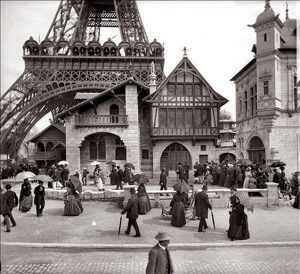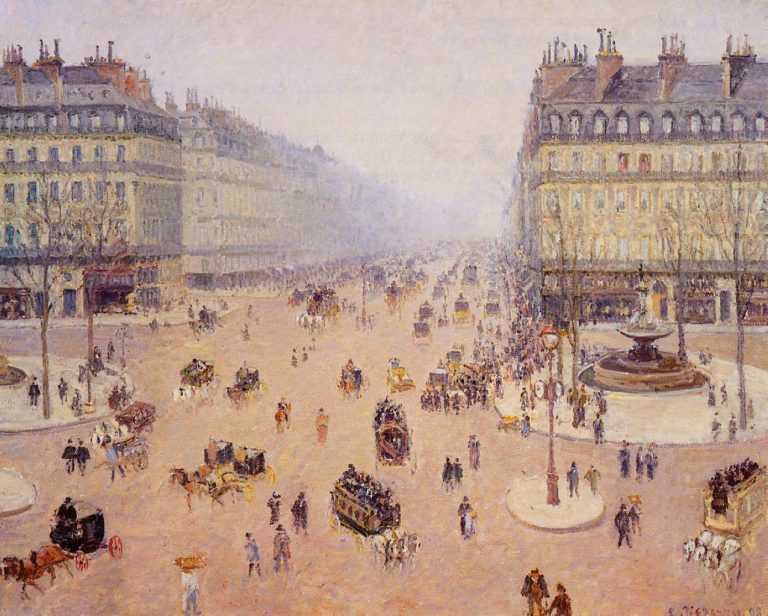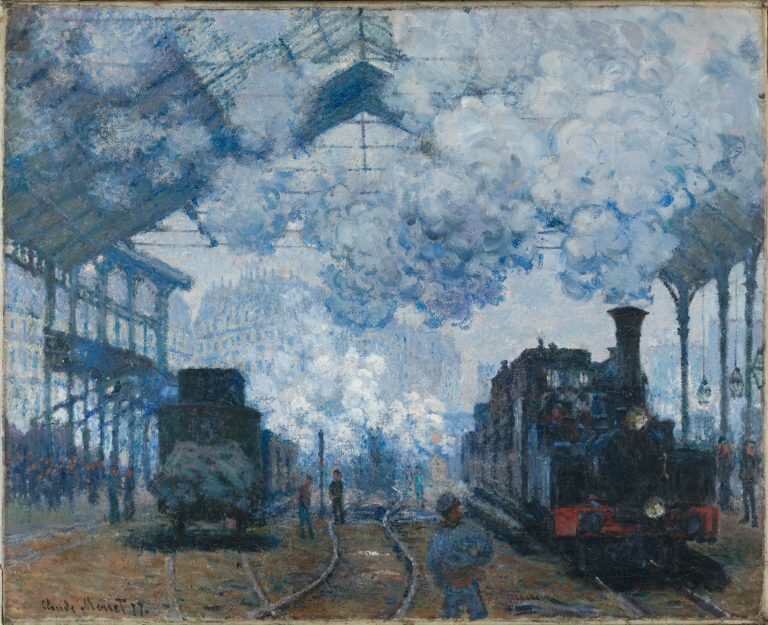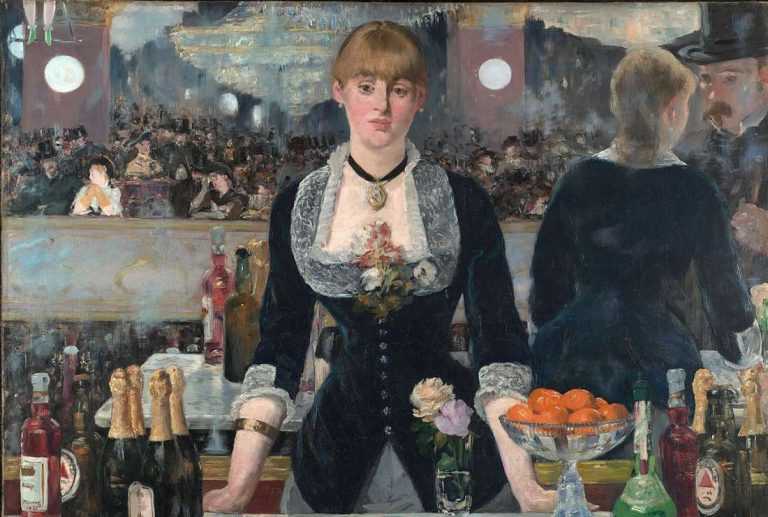
The French term “fin-de-siècle” means “end of century” or “the end of an era” is associated with a pessimistic vision of decline, and of the decadent tendencies of the late nineteenth century. Europe at the end of the 19th century found itself in a difficult time, a time between old traditions and the ongoing industrial revolution. It was this world-wide depression which inspired new directions in art as one era ends and the next is ushered in. Thus, this period marked the birth of Modernism.

Camille Pissarro – Avenue de l’Opera, Place du Theatre Francais Misty Weather, 1898
Most people consider the most famous face of Paris to be the high buildings from that period such as Gare St. Lazare or Opera Garnier but not everyone welcomed this Haussmann revolution with enthusiasm. Between 1852 to 1870 the old Paris of 28000 medieval buildings was to be reborn as the modern City of Light. Napoleon III and his city planner Haussmann decided to destroy old, historic buildings to make way for new types in a new style. Most notably they were to create big boulevards for a new generation of modern citizens. All these changes evoked mixed feelings throughout traditional Parisian society but held a great fascination for many artists.

Claude Monet Gare St. Lazare, 1877
Realists, such as Manet, were well known as artists who for the first time decided to show everyday life on paintings. Impressionists, such as Renoir, immortalized their fascination of modern life on canvas representing Paris landscapes, images of a new society and even the urban underclass. The most characteristic feature of impressionistic painting was the pursuit of portraying sensual, fleeting moments.

Eduard Manet – Le Bar aux Folies-Bergère 1881
Soon after there emerged another art movement led by Toulouse-Lautrec, one of the best-known painters of the Post-Impressionist period. Due to his growing alcoholism, Toulouse-Lautrec became a frequent visitor of Montmartre cafes and cabarets, especially the world famous Moulin Rouge. He was fascinated by the lifestyle of the “urban underclass” and these are the characters which are mostly present in his paintings. He is the best known illustrator of the city’s nightlife and his posters and paintings are still associated today with the vision of 19th century Paris.

Henri de Toulouse-Lautrec – Au Salon de la rue des Moulins, 1894
Present day Paris is changed from those romantic exciting times of the 19th century but we can continue to relive it all through the paintings of legendary artists who helped to define this new City of Light.